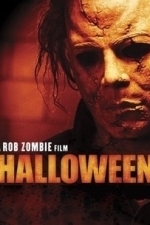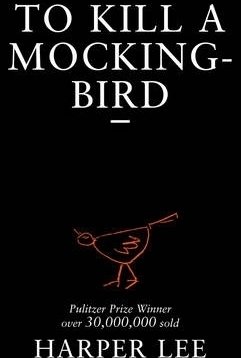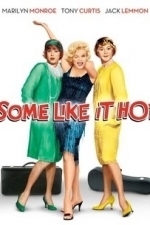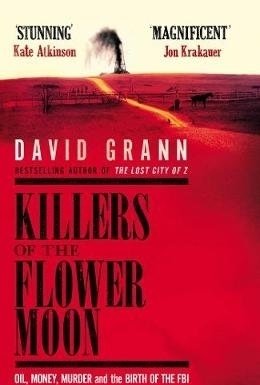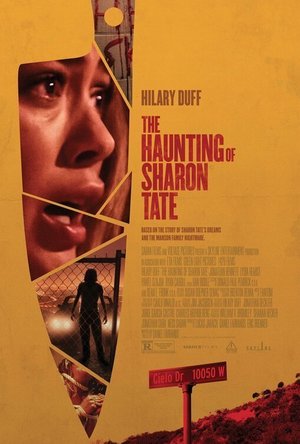
London Wallpapers: Their Manufacture and Use 1690-1840
Book
London Wallpapers, first published in 1992, has long been out of print. In this new, revised edition...
Chris Sawin (602 KP) rated Halloween (2007) in Movies
Jun 19, 2019 (Updated Jun 21, 2019)
There seems to be a huge debate amongst horror fans about whether this film was good or not. The results seemed to be pretty one-sided in favor of the original horror film from 1978, but now it seems the remake has almost just as many fans. I wouldn't say it was a 50/50 ratio, but 60/40 (60% of horror fans either hate the remake or prefer the original, 40% like the remake or prefer it over the original) seems about right these days. I managed to see the work print a few years ago and I wasn't impressed. With the release of Halloween 2 at the end of this month though, I promised myself I would give this film another shot. So that time has finally come and I can honestly say that the film isn't as bad as I remembered.
A few aspects of the film are actually quite good. Tyler Mane is a great Michael Myers. He's almost seven feet tall and is built like a giant. He's a total monster and the destruction and mayhem he causes is believable given his size. The adult version of Michael Myers is spot-on for a re-imagining of the film. Malcolm McDowell also does a good job as Dr. Loomis. He's no Donald Pleasance, but McDowell's take on the character isn't bad. Scout Taylor-Compton is also a worthy mention. She slips into the shoes of a modern day Laurie Strode rather flawlessly. Moving on from the acting though, the film is pretty solid from the time Michael gets his iconic mask through the finale. The way Michael made so many masks while he was in Smith's Grove was an interesting idea and the scene where you see his room fifteen years later with nothing but masks on every wall is one of the best in the film. The cinematography is also something that is often overlooked, which is a shame since it's actually pretty exceptional. It seemed to stand out most during the scenes where Michael was stalking Laurie, especially in the abandoned Myers house at the end. There's a scene right after Michael gets out of Smith's Grove where he goes to a truck stop and winds up getting the jumpsuit we're all familiar with. While there, he runs into Big Joe Grizzly in the bathroom stall and is banging Grizzly's hand, which is holding a knife, against the bathroom stall wall. As he's doing this though, the bathroom stall is just getting demolished but with every smashing blow, the camera violently shakes. The camera just always seemed to have a knack for giving a good perspective of what the character was going through, whether it was Michael or Laurie.
The disappointing part of this is pretty much everything leading up to Michael getting his mask back after his escape is pretty terrible. The dialogue, especially in the first ten to fifteen minutes of the film, is horrendous. Everything that's said between Deborah Myers and Ronnie White is just awful. The white trash upbringing just doesn't seem worthy for a horror icon like Michael Myers. It's just hard to believe that Michael Myers is the way he is because his mom was a stripper and his older sister was a whore. Logic seems to just be thrown by the way side as the film progresses. After Michael escapes from Smith's Grove, he returns to his old house where his mask and knife that he used to kill his family happen to just be lying under the floorboards. So did the police just pick up the bodies without searching the house or what? So he got his jumpsuit by stealing it from a guy taking a dump at a truck stop? Really? Hearing some of the original music return from John Carpenter's version of the film was a bit bittersweet. On one hand, it was great hearing it again. On the other, however, it just didn't seem to fit. Made me miss the original film more than anything. Giving Michael Myers a specific origin was probably Zombie's biggest mistake. The most terrifying thing about Michael Myers was that he was The Shape and had a bit of mystery to him. You knew he was going after Laurie, but other than that you had Loomis' word to fall back on. Michael was the human incarnation of pure evil. That's it. That's all you need. Humanizing the character and introducing us to his childhood only watered down the Michael Myers character.
There's a scene with Michael Myers and Dr. Loomis in Smith's Grove Sanitarium where Michael has made a mask that he's colored completely black. When Loomis asks him why it's black, Michael says that it's his favorite color. Loomis goes into an explanation about the color spectrum. Black is on one end and is the absence of color while white is at the opposite end and is every color. That's actually a great explanation of the differences between the original film and the remake. The original film would be the black segment of the spectrum. Carpenter's version leaves more to the viewer's imagination as the only explanation for Michael Myers is that he is "pure evil." While the remake would be the white segment of the spectrum as it goes into full detail why Michael Myers is the way he is and it shows every little violent and vulgar detail. Some people would say that having a little bit of mystery would be a good thing when it comes to a film like this while others like having everything laid out for them. It all depends on the viewer and which end of the spectrum they prefer. In my opinion though, that's the biggest mistake Rob Zombie made. There's no mystery left with the Michael Myers character. He's no longer The Shape, but is a psychopathic killer because he was raised by a white trash family, liked to torture animals, and whose sister didn't take him trick or treating.
The best thing Zombie can do is distance himself from the original film(s) as much as possible. To do something original with these characters. He looks like he'll do just that when Halloween 2 hits theaters on August 28th. One thing re-watching the remake accomplished was that it made me look forward to the sequel. The trailer looks really good (but to be fair, so did the trailer for the original film) and I was on the fence about it until I saw this again. The only problem I have is that Zombie seems to be telling the same story with the same initial cast with all of his films. House of 1,000 Corpses, The Devil's Rejects, and Halloween (first half of the film) are all way too similar. Zombie needs something new to add to his resume. Will Halloween 2 deliver that? Probably not, but a guy can hope.
Kayleigh (12 KP) rated To Kill a Mockingbird in Books
Jan 2, 2019
The story is set in Maycomb, Alabama in the 1930s, and is written from the perspective of Jean Louise ‘Scout’ Finch, who is between six and eight years old as the story progresses. The start of the book does an effective job of introducing us to all the characters. Scout lives with her widowed father, Atticus, a lawyer, her brother Jem (who is 4 years older than her) and Calpurnia, a black woman who acts as a type of mother figure. A friend, Dill, also joins them in the summer. The three children are intrigued by Arthur ‘Boo’ Radley, who lives in the house on the corner but is never seen outside. I really enjoyed this part of the story; it set the scene brilliantly, as well as helping me reminisce about my own childhood. Even if there is no ‘haunted’ house, children will always make one – at least, my brother and I did! With the limitless amounts of imagination children have, there will always be adventures to be had and ‘monsters’ to escape from. There was one particular house, when we were around the same age as Jem and Scout, where they had a doorbell you pulled, like a cord. My brother Josh said it was a doorbell that made you scream every time you pulled it, so we obviously had great fun in pulling it, screaming, and running away. If by some fluke the person living there is reading this, I’m really sorry, but it still makes me laugh! There was also every Christmas, when we went carol singing. We had decided that the houses beyond the wood were richer than the others, and every year would link arms, lighting matches to try and find our way in the dark and telling ghost stories the whole time.
Once everything has been established, the book moves on to a case Atticus is defending. A black man, Tom, has been accused of raping Mayella Ewell, part of a trashy white family with very poor education and even less money. This is where the casual prejudice of the time is evident – Jem and Scout have to put up with people calling their family a “nigger-lover” (sorry if that language offends, it is a direct quote and I mean no harm); Atticus faces repercussions for his whole-hearted attempt to save Tom; and many of the Maycomb women look down on the black community. However, there’s still a touch of hope – the way Atticus defends Tom’s case makes everybody think, a great feat in the setting where black and white people are in completely different classes. In this part of the story, I really looked up to Atticus, in his seemingly-infinite wisdom.
In the final part of the story, Jem and Scout finally get to meet Boo Radley, and it is here that the title of the book becomes apparent. In the middle of the book, after Jem and Scout get air-rifles, it is said:
<blockquote>When he gave us our air-rifles Atticus wouldn’t teach us to shoot. Uncle Jack instructed us in the rudiments thereof; he said Atticus wasn’t interested in guns. Atticus said to Jem one day, “I’d rather you shoot at tin cans in the back yard, but I know you’ll go after birds. Shoot all the bluejays you want, if you can hit ‘em, but remember it’s a sin to kill a mockingbird.”
That was the only time I ever heard Atticus say it was a sin to do something, and I asked Miss Maudie about it.
“Your father’s right,” she said. “Mockingbirds don’t do one thing but make music for us to enjoy. They don’t eat up people’s gardens, don’t nest in corncribs, they don’t do one thing but sing their hearts out for us. That’s why it’s a sin to kill a mockingbird.”</blockquote>
Obviously, not knowing what was coming, I thought the story must eventually be about the children shooting a mockingbird. The last page of the book, though, I realised that it was a lot more subtle and symbolic than that. The mockingjay is Boo Radley, the man who gives when he can and causes no harm.
I really wish I’d read this story as a child, to see what sort of perspective I’d have had back then. Reading as an adult means that, while Scout was a brilliant perspective, I was almost reading as an outsider. I could see her maturing, slowly fitting the pieces together to start acting like an adult, but at the same time it was an undeniably adult reading. I really really enjoyed the book, but I have a feeling it’s one of those multi-faceted ones where you read something different every time. I can’t help thinking that reading it as a child would have been a lot more powerful.
This review is also on my <a href="http://awowords.wordpress.com">blog</a>; - if you liked it, please check it out!
Emma @ The Movies (1786 KP) rated Some Like It Hot (1959) in Movies
Sep 25, 2019
It's been a long time since I've seen this and I'm always a little cautious about revisiting old favourites as my taste in films gradually changes. But luckily this one hadn't lost any of it's magic. It's a simple idea that's taken to the next level by a talented cast and wonderful script.
One of the reasons I think I love old movies so much is that they had a love of musical elements. I was always a fan of The Andrews Sisters, the Road movies, and of course musicals. A jazzy little number kept you buzzing and always knocked the entertainment value up a notch. This is no exception. Everyone loves some sultry Monroe be-dooping on screen.
There are lots of snippets online about the production and it give you a fantastic background. Monroe was terrible at remembering even that basic lines and they ended up writing lots of them down to hide on set, but some how that still didn't help to reduce the number of takes they needed to do. Curtis' prim and proper Josephine actually came about from him being uncomfortable dressed as a woman. Lemmon gave up being taught how to walk in heels because he wanted to look like a man wearing heels for the part. Despite it being in Monroe's contract that all her films had to be in colour they agreed to film in black and white because the make-up Curtis and Lemmon were wearing made them looking slightly green on camera... that's just some of it. It's well worth having a look around for other tidbits.
It's amazing to think that the flawless looking make-up in black and white looks completely different in colour. Let's face it, they both turn out looking pretty good dressed as women.
As a double act Curtis and Lemmon are wonderful together, both and Joe & Jerry and Josephine and Daphne. The dialogue, timing and the way they interact physically is all brilliant. One of my favourite bits is very early on when they realise the "funeral" is about to get raided. It's cool, calm and coordinated, not a beat is missed and the whole sequence puts a smile on my face.
I went to log this film on Letterboxd and noticed that I'd rated it as a four star film. Accurate, I thought to myself. But as I started to write notes for this review I realised I was sorely under appreciating it. How could I not give this five stars? Everything it does, it nails.
Being really picky, I'm not a big fan of Marilyn Monroe as an actress. I never feel that she stood up on her own, it tends to be the effort of everyone else that makes her shine better. That being said, she still has that massive impact on the screen and a naivety that needs to be there for some of the humour to work. Curtis dropping the dead pan line about water polo wouldn't have worked with any other type of character.
If I were to list the best bits of the film here I might as well just narrate you the whole movie. There are so many fun bits but one of my top ones is the engagement. That childlike glee is just so much fun that you're rooting for it to work too.
What you should do
There's no way that you should go through life without seeing Some Like It Hot. While there are a couple of moments that feel dated the humour is so good it would be a travesty to miss it.
Movie thing you wish you could take home
Tough choice... Curtis' agility when climbing the front of the hotel, Lemmon's dance moves, or the ability to make a cocktail in a hot water bottle... decisions decisions!
Hazel (1853 KP) rated Killers of the Flower Moon: The Osage Murder and the Birth of the FBI in Books
Dec 7, 2018
It is well known that throughout history, facts have been omitted from history books. Written accounts of events ostensibly make important figures and countries appear to be in the right, whereas reality reveals otherwise. One such exclusion is the fate of the Native Americans inhabiting the southern states at the beginning of the 1900s. Children are brought up to believe the stories that “Red Indians” are bad and the cowboys are good, but this was unlikely the case. David Grann has researched into a particular period of Native American history that most people may never have heard of.<I> Killers of the Flower Moon</I> reveals the horrors innocent people faced at the hands of perfidious criminals.
The majority of the book is written as a third person narrative, recounting the lives of some of the members of the Osage Indian Nation in Oklahoma. White people, believing themselves to be superior, had forced the natives off their homelands and onto rocky, unwanted ground. What they did not anticipate, however, was the abundance of oil residing beneath the surface. The Osage went from being oppressed to being the wealthiest people in the state. Full of avarice, the whites were not going to let them get away with this fortune for long.
David Grann takes a particular interest in Mollie Burkhart, an Osage member with a white husband. Mollie had three sisters, but within a few short years they were all dead, and so was her mother. Believing they had been murdered, Mollie fears for her life. Other Osage members were also being killed, as well as those who tried to investigate the spreading slaughter. However, the case remained stubbornly unsolved.
Nevertheless, there was still hope for Mollie after the arrival of Tom White, an agent of the soon to be known as Federal Bureau of Investigation (FBI). Determined to get to the bottom of the so-called Reign of Terror, Tom and his team carefully analyse the behaviours and motives of the disingenuous citizens, narrowing down the suspects until eventually finding their duplicitous killer.
Learning about this unknown period of history is eye opening and offers a completely new view on the relations between whites and Native Americans. It was a time of prejudice and racism, not unlike the attitude towards black people emphasised with the civil rights movement in the mid-1900s. Greed was a significant motivator, particularly where making money was involved. But, David Grann does not stop here.
The final section of <i>Killers of the Flower Moon</i> is written from the author’s perspective. As a staff writer at <i>The New Yorker</i>, the evidence of the Osage murders case intrigued David Grann, but he was concerned about some unresolved holes in the story. Determined to uncover the truth, Grann conducted his own research to discover the culprits behind the undocumented murders unrelated to Mollie Burkhart’s family. What he stumbles on highlights the severity of the dark fate the Osage Indians were threatened with.
Despite being written as a narrative, it is obvious that <i>Killers of the Flower Moon</i> is a work of non-fiction. It lacks emotion and character insight, however, since it is not meant to be a fabricated story, these elements are not required. Instead, it shocks and disturbs the reader with its unbelievable truths.
An extensive biography proves the authenticity of David Grann’s revelation. With the reinforcement of FBI files, jury testimonials, statements, court transcripts, letters, telegrams, diaries and confessions, Grann produces a strong historical record of events that should not be glossed over. Without authors and books such as <i>Killers of the Flower Moon</i>, people will blindly go around believing falsehoods. The truth needs to be discovered, and readers can start by reading this book.
BackToTheMovies (56 KP) rated The Haunting of Sharon Tate (2019) in Movies
Jun 21, 2019
August 8, 1969, the night that Sharon Tate, Jay Sebring, Wojciech Frykowski, Abigail Folger and Steven Parent were brutally murdered. The film focuses on the days before the tragic event. The movie dramatizes the slayings and plays on the notion that Sharon Tate predicted her own death in the days leading up to the slaughter.
Surrounded by bad acting and awful scripting it was a very poor choice to make this film in the first place. Writer-director Daniel Farrands has created an offensive and frankly insulting ‘thriller’. Hilary Duff stars as Sharon Tate and whilst she somewhat looks the part, she doesn’t have that raw magic and flair that Sharon had. This tragic event has been turned into some stock-horror slash um up movie with a psychic paranormal twist.
At one point Manson’s song ‘Cease to Exist’ plays to Sharon over a tape player and the Manson Family stalks Tate and her friends around her home. It really is that bad. The introduction of the movie shows real-life footage as a black and white Hilary Duff talks about her own death. The opening scene of the movie is enough to want me to turn off the film instantly.
The Haunting of Sharon Tate still
With no care or respect being paid to the real-life counterparts, the movie has very little to say other than ‘you’re going to die soon’. There’s no feeling of empathy. The Haunting of Sharon Tate is just a 90-minute exploitation of a horrific night in Hollywood’s history.
https://backtothemovies.com/exploitative-trash-the-haunting-of-sharon-tate-review/
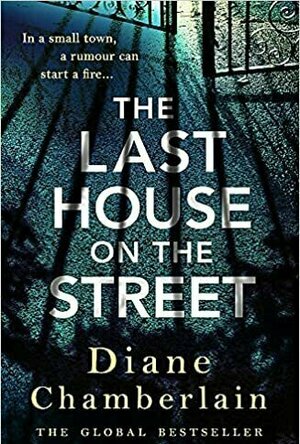
The Last House on the Street
Book
A small town divided by prejudice. A secret that won't remain silent... The stunning new novel...

Tom Scanner Pro - PDF document scanner with OCR
Business and Utilities
App
Tom Scanner is the best app for quickly scanning and saving a digital version of a paper document....

Canon PIXMA TS9150
Tech Watch
Canon’s PIXMA TS9150 is a stylish and feature-packed all-in-one inkjet colour printer, offering...

ChmPlus Pro - CHM Reader
Book and Utilities
App
ChmPlus Reader (CHM+ Reader) is a feature-rich CHM (Microsoft Compiled HTML Help) document / ebook...
